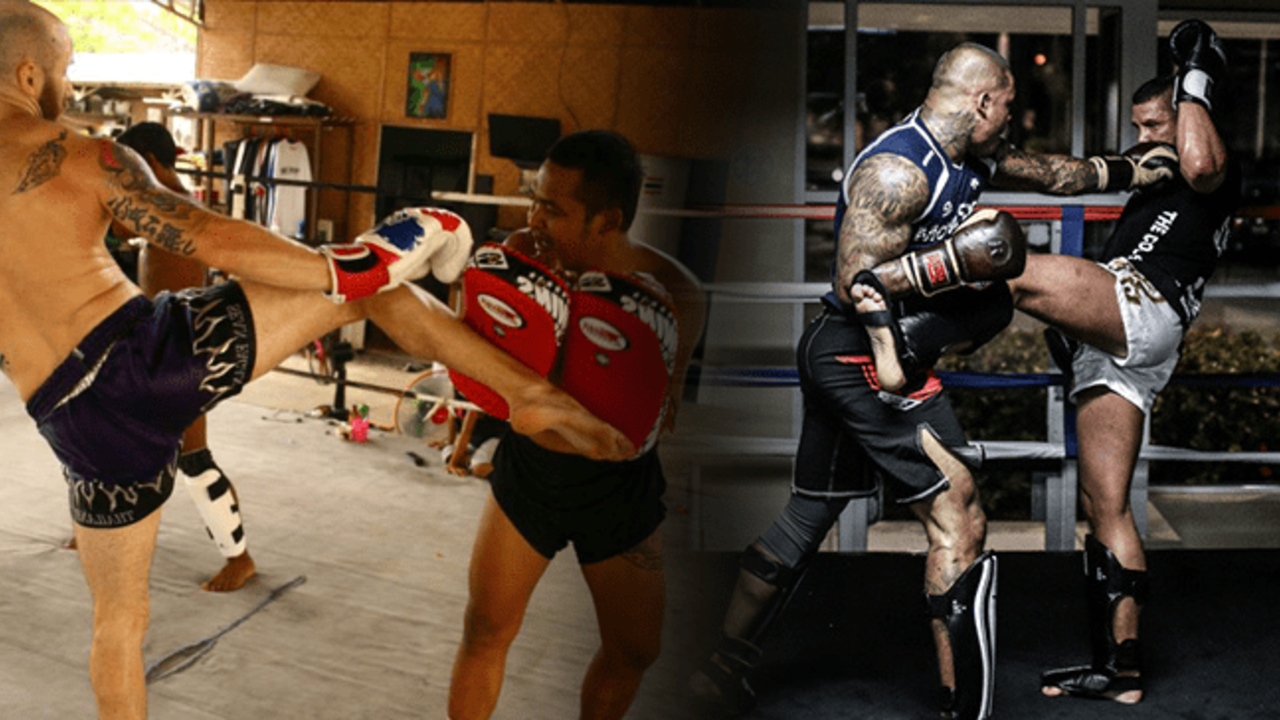Training Style Breakdown: Muay Thai, Dutch Kickboxing, & Western Style

The Muay Thai Guys Podcast – Episode 49
From Muay Thai Guy
What style of training do you prefer?
Are you more about the traditional Muay Thai style where the focus is on pad work and clinching?
Or are you more about the Dutch kickboxing style that revolves around partner and sparring drills for the majority of class?
OR are you a hybrid style that includes Muay Thai, kickboxing, MMA, boxing and other martial arts?
It’s important to know the pros and cons of each style so that you’re able to constantly evolve and improve in all aspects of your fight game. In this weeks podcast episode, Paul and I discuss what our favorite styles of training as well as the benefits of each one.
Here’s a brief rundown of what we talk about in this episode:
Training Style #1 – Muay Thai
This style is obviously the most familiar to the audience. It’s primarily endurance based that involves the strict, structured day to day program of running, shadowboxing, heavy bag work, pad work, sparring, clinching and abs. This is the type of training that has been an integral part of the Thailand Muay Thai culture since it’s start.
Scoring in a Thai fight also favors a well-balanced nak muay who controls the ring showing the most beautiful Muay Thai technique. Body kicks, knees, elbows and clinch are scored very high in Muay Thai fights, so you can bet your ass you’ll be drilling those everyday during training sessions.
Although this style has proven to work for the Thai people, the training regimen can at times be close minded to areas such as sports science, recovery and nutrition.
Training Style #2 – Dutch Kickboxing
Dutch fighters have been very successful in the most prestigious K-1 competitions. Out of the 19 K-1 World Grand Prix championship titles issued from 1993 to 2012, 15 went to Dutch participants (Peter Aerts, Ernesto Hoost, Remy Bonjasky, Semmy Schilt and Alistair Overeem)… so they must be doing something right!
The Dutch style of training is much more focused on building power and combinations. It’s also primarily based around partner drills and sparring which creates a realistic offense/defense situation that helps improve your timing and distancing (as opposed to Muay Thai which is pad work and clinching focused.).
Kickboxing rules and scoring also differ than Muay Thai rules – hence the stylistic difference in the training sessions. Where Muay Thai fights score high in body kicks and clinching, kickboxing fights don’t allow clinching and are scored on powerful combination, aggression and overall damage.
Training Style #3 – Western/Hybrid Style
The western hybrid style is young and still in its infancy stage. It’s essentially a a mix of traditionalists, kickboxers, MMA fighters and boxers blending into the world of striking.
There is no cookie cutter outline for a training session as they vary greatly. Some gyms will focus more on the Muay Thai style with their classes mainly consisting of pad work and clinching, while other gyms will primarily focus on kickboxing partner drills and sparring a bit more. This style of training tends to be a bit more openminded to new age training methods, exercise science, nutrition etc.
We cover these 3 training styles more in-depth in this weeks podcast. Take a listen:
Click To Listen >>> Training Style Breakdown: Muay Thai, Dutch Kickboxing, & Western Style
The Muay Thai Guys come out with NEW episodes almost every week! Make sure you don’t miss one by subscribing via one of the options below:
Click here to subscribe on iTunes
Click here to subscribe on Stitcher
Follow Muay Thai Athlete and Muay Thai Guy on Facebook
Have any questions or suggestions for future podcast topics?
Contact Sean or reach out to Paul on Muay Thai Athlete or comment below with your thoughts and maybe your topic will be covered in the next episode!
Feed Your Muay Thai Addiction!
Join our "Muay Thai Mondays" email newsletter for the latest updates on new videos, special events and everything Muay Thai!





